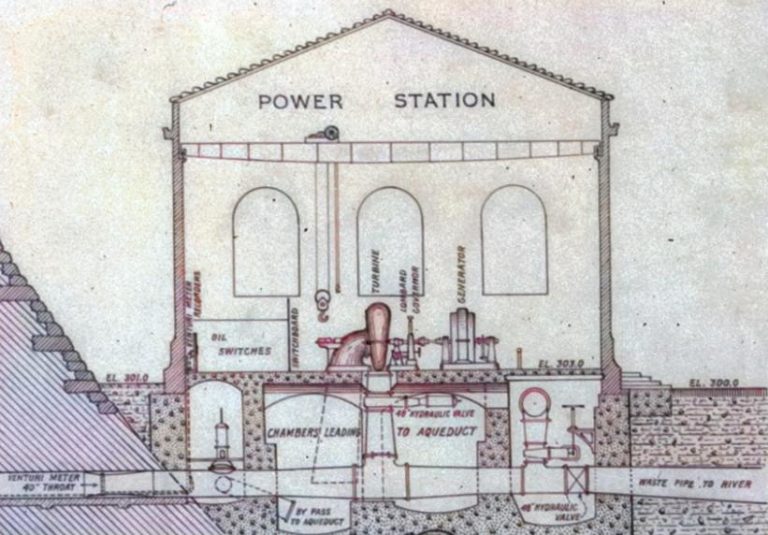Wachusett Dam & Reservoir
Hidden Hydraulics at the Dam

Lower Gate House
Excerpted from the:
Sixth Annual Report of Metropolitan Water Board for the Year 1900
Annual Report of the Chief Engineer
Dam Design Details
Lower Gate Chamber
The lower gate-chamber is located immediately below the dam and is to serve as a head house for the Wachusett Aqueduct and a powerhouse for utilizing the power of the water as it falls from the reservoir to the aqueduct.
Each 4-foot pipe passes through the four wells into which this structure is divided.
The first well is a dry one, in which the eight 2-foot gates will be located on branches from the 4-foot pipes, for regulating the flow of water into the aqueduct. These gates are connected with pipes which will discharge into a 4-foot perforated pipe, known as a diffuser, which will be located in the second well.
The second and third wells will contain the feed pipes to the turbines, which are to be located at a higher level, and the discharge pipes (draft tubes) from the turbines.
The fourth well will, under ordinary circumstances, be a dry well, containing a 4-foot gate on each of the 4-foot pipes; but if the quantity of water discharged should by accident be in excess of the capacity of the aqueduct, the surplus water will overflow into the fourth well, and thence, through two 5-foot pipes which have no gates upon them, into the waste conduits.
Frederick P. Stearns
Chief Engineer
Note: This article, as with all articles on this website, provides a discussion of the original plan and operations of the Wachusett Dam and Reservoir. To date the owners of the Lower Gate House (MWRA) have made a number of upgrades and operational changes to this structure. Additional capital projects are continually in planning to ensure the continued safe and efficient operation of this, and all, aspects of this important facility.
Pipe manifold in the Lower Gate Chamber